4.8 out of 5 Stars on TrustPilot
Mineral Wool vs EPS vs Kingspan K5 vs Wood Fibre in Solid Wall Insulation Systems
With external wall insulation systems becoming more and more popular, in this blog we are going to discuss the 4 main types of insulation you can use within the EWI System, along with the advantages and disadvantages of each.
Mineral Wool (Rockwool) in Solid Wall Insulation Systems
Most people are familiar with Mineral Wool in the context of loft insulation – the big rolls of insulation you see in your local DIY store. The Mineral Wool used externally is a little different, it comes in batts rather than rolls, and the wool fibres themselves are very dense so the boards can be applied vertically without drooping.
We recommend the Rockwool Dual Density boards when using Mineral Wool in solid wall insulation applications – this Mineral Wool is made from molten rock and has lots of features that make it a great choice for your insulation project:
- Rockwool is an architect’s favourite, mainly due to its breathability, which allows moisture to travel across the wall and helps dissipate dampness from in the house.
- Rockwool is non-combustible. The European Reaction to Fire Classification (Euroclass) system is the common standard for assessing the qualities of building materials in the event of a fire and the Rockwool Dual Density insulation boards used are CE-marked to achieve a Euroclass rating of A1 – the highest rating available.
- Rockwool is renowned for its excellent soundproofing properties. The insulations open wool structure makes it ideal for absorbing and regulating noise in both residential and commercial buildings, lasting for the lifetime of the property.
- Rockwool has fantastic thermal insulating properties. When attached to the exterior of a property, 110mm of our dual-density slabs will take the U-value down to 0.3, which means the building will then conform to building regulations. For the occupants, it means improved thermal comfort since the property will stay at more even temperatures and also lower energy bills.
-
Rockwool External Wall Dual Density Slab
Rated 5.00 out of 5From £25.19 Incl. VATFrom £20.99 Excl. VAT
Considerations when choosing mineral wool
There are a couple of things you might want to consider when deciding if Mineral Wool insulation is for you! Firstly, the boards are heavier than the other types of insulation that we are going to discuss, so it means a bit more work moving them around the site, and also a stronger adhesive EWI-225 needs to be used to stick these to the substrate. Also despite being a good insulator, both Kingspan K5 and EPS have better thermal efficiencies, so you need more Rockwool to achieve the same u-values.
We would always recommend using gloves when installing the Rockwool boards as the wool fibres can be itchy.
-
Premium Basecoat (EWI-225) – 25kg
Rated 5.00 out of 5£23.23 Incl. VAT£19.36 Excl. VAT -
EPS Insulation (1 board = 0.72m²)
Rated 5.00 out of 5From £2.60 Incl. VATFrom £2.17 Excl. VAT -
K5 Kingspan External Wall insulation Board (0.72m²)
Rated 4.67 out of 5From £11.39 Incl. VATFrom £9.49 Excl. VAT
Expanded Polystyrene (EPS) in Solid Wall Insulation Systems
EPS is our most popular insulation product because it is easy to use, has good value, and offers great thermal improvements to the property. EPS itself is 98% captured air within a 2% cellular matrix, and it’s this trapped air that gives the product its fantastic insulating properties.
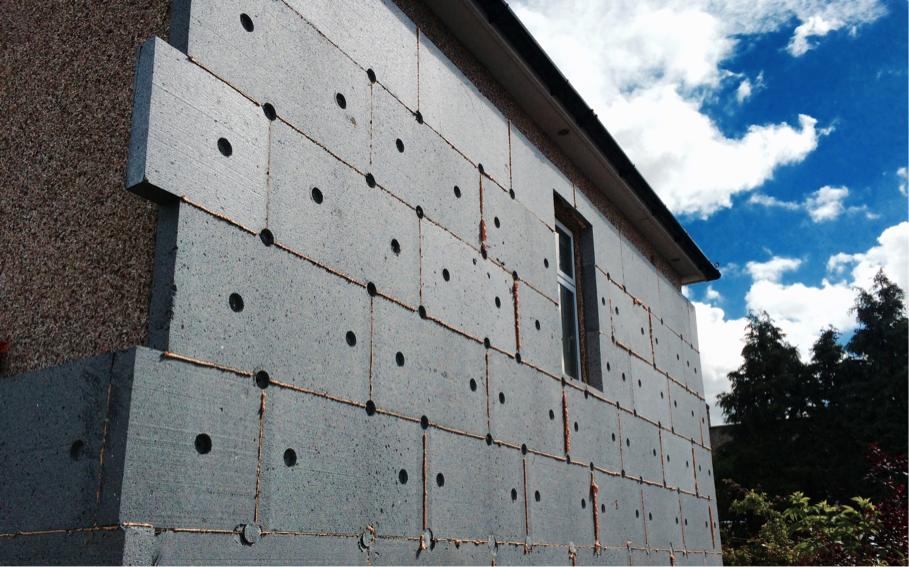
Our EPS is also graphite enhanced (which gives it a grey colour), which further enhances its thermal performance. The insulation is available in a range of thicknesses (10mm increments from 20mm), however, if installing external wall insulation on an existing property, 90mm of insulation will normally suffice in bringing the U-value of the wall to 0.3. This is a significant improvement over the Mineral Wool.
Of all the types of insulation we recommend for external wall insulation, EPS is the most cost-effective. This is probably one of the reasons it is so popular with homeowners, but the boards are lightweight and easy to cut and fit so are popular with installers too.
The downside of EPS is its reaction to fire – according to EN 13501-1, its fire resistance is class E. This means the EPS insulation boards are combustible, although based on the fact polystyrene is a hydrocarbon, this is hardly surprising. The good news is that when used in external wall insulation systems, the EPS is completely embedded within the cement-based adhesive, meaning that the risk of the EPS coming into contact with air is minimal, which helps prevent it from combusting.
Kingspan K5 in Solid Wall Insulation Systems
Kingspan is a market-leading manufacturer of optimum, premium and high-performance rigid insulation products. The Kingspan Kooltherm K5 is their external wall insulation board, specially designed to be used with masonry walls.
The K5 insulation board contains a fibre-free rigid thermoset phenolic core which gives it unrivalled thermal performance.
Therefore, for jobs where space is a premium (i.e. walkways between buildings) or the customer wants to minimise the depth of the reveal/insulation off the wall, then K5 is a great choice. Likewise, if you are trying to go above and beyond building regulations requirements, using like-for-like thicknesses of K5 (instead of EPS) will see the u-value reduce to less than 0.2, resulting in even greater energy savings within the building.
As a result of the K5 having superior thermal performance, the price for this type of insulation board is higher than you would pay for EPS at the same thickness. When using Kooltherm K5 you are also required to use the stronger adhesive to attach the boards to the substrate, as well as the base coat.
Wood Fibre in Solid Wall Insulation Systems
Wood Fibre insulation systems are the most sustainable way to insulate externally. The Pavatex is made from pine – a sustainable raw material – in the form of waste chippings, shavings and sawdust from sawmills.
Due to its unparalleled breathability, Insulation is perfect when used for a timber-framed property because it is a vapour-open building material. It’s essential for a timber building to be able to breathe to prevent dampness and maintain structural integrity. Wood Fibre Insulation will regulate the passage of water through the building structure, allowing for the diffusion of moisture and preventing any detrimental moisture build-up within the property and the EWI system.
In terms of thermal performance compared to EPS, Kooltherm K5 and Rockwool, the Pavatex does lag slightly behind. 120mm of Pavatex is required to hit the u-value of 0.3 when applying the insulation to a solid wall property, however, for some the eco-benefits of this type of insulation outweigh this.
In conclusion – comparing Mineral Wool vs EPS vs Kingspan K5 vs Wood Fibre in solid wall insulation systems
If you are looking for a good value insulation product, we would suggest looking no further than the EPS. This is what the majority of people will use (although it is limited to buildings that are 18m high).
If you are worried about fire safety, then Rockwool mineral wool is the insulation product to go for, although it is slightly more difficult to install than the other products.
If you are worried about space or have a project where every centimetre counts, then go for the Kingspan Kooltherm K5 insulation products, with their unrivalled thermal performance.
For the most sustainable insulation material, Pavatex wood fibre insulation is the answer!
Facebook
Twitter
LinkedIn
Your cart
Trade Account Login

We use cookies on our website to give you the most relevant experience by remembering your preferences and repeat visits. By clicking “Accept All”, you consent to the use of ALL the cookies. However, you may visit "Cookie Settings" to provide personalised consent.
Manage consent
Privacy Overview
This website uses cookies to improve your experience while you navigate through the website. Out of these, the cookies that are categorized as necessary are stored on your browser as they are essential for the working of basic functionalities of the website. We also use third-party cookies that help us analyze and understand how you use this website. These cookies will be stored in your browser only with your consent. You also have the option to opt-out of these cookies. But opting out of some of these cookies may affect your browsing experience.
Necessary cookies are absolutely essential for the website to function properly. These cookies ensure basic functionalities and security features of the website, anonymously.
| Cookie | Duration | Description |
|---|---|---|
| __stripe_mid | 1 year | This cookie is set by Stripe payment gateway. This cookie is used to enable payment on the website without storing any patment information on a server. |
| __stripe_sid | 30 minutes | This cookie is set by Stripe payment gateway. This cookie is used to enable payment on the website without storing any patment information on a server. |
| _GRECAPTCHA | 5 months 27 days | This cookie is set by the Google recaptcha service to identify bots to protect the website against malicious spam attacks. |
| apbct_cookies_test | session | CleanTalk sets this cookie to prevent spam on comments and forms and act as a complete anti-spam solution and firewall for the site. |
| apbct_page_hits | session | CleanTalk sets this cookie to prevent spam on comments and forms and act as a complete anti-spam solution and firewall for the site. |
| apbct_prev_referer | session | Functional cookie placed by CleanTalk Spam Protect to store referring IDs and prevent unauthorized spam from being sent from the website. |
| apbct_site_landing_ts | session | CleanTalk sets this cookie to prevent spam on comments and forms and act as a complete anti-spam solution and firewall for the site. |
| apbct_site_referer | 3 days | This cookie is placed by CleanTalk Spam Protect to prevent spam and to store the referrer page address which led the user to the website. |
| apbct_timestamp | session | CleanTalk sets this cookie to prevent spam on comments and forms and act as a complete anti-spam solution and firewall for the site. |
| apbct_urls | 3 days | This cookie is placed by CleanTalk Spam Protect to prevent spam and to store the addresses (urls) visited on the website. |
| AWSALBCORS | 7 days | This cookie is managed by Amazon Web Services and is used for load balancing. |
| cookielawinfo-checkbox-advertisement | 1 year | Set by the GDPR Cookie Consent plugin, this cookie is used to record the user consent for the cookies in the "Advertisement" category . |
| cookielawinfo-checkbox-analytics | 11 months | This cookie is set by GDPR Cookie Consent plugin. The cookie is used to store the user consent for the cookies in the category "Analytics". |
| cookielawinfo-checkbox-functional | 11 months | The cookie is set by GDPR cookie consent to record the user consent for the cookies in the category "Functional". |
| cookielawinfo-checkbox-necessary | 11 months | This cookie is set by GDPR Cookie Consent plugin. The cookies is used to store the user consent for the cookies in the category "Necessary". |
| cookielawinfo-checkbox-others | 11 months | This cookie is set by GDPR Cookie Consent plugin. The cookie is used to store the user consent for the cookies in the category "Other. |
| cookielawinfo-checkbox-performance | 11 months | This cookie is set by GDPR Cookie Consent plugin. The cookie is used to store the user consent for the cookies in the category "Performance". |
| ct_checkjs | session | CleanTalk–Used to prevent spam on our comments and forms and acts as a complete anti-spam solution and firewall for this site. |
| ct_fkp_timestamp | session | CleanTalk sets this cookie to prevent spam on the site's comments/forms, and to act as a complete anti-spam solution and firewall for the site. |
| ct_pointer_data | session | CleanTalk sets this cookie to prevent spam on the site's comments/forms, and to act as a complete anti-spam solution and firewall for the site. |
| ct_ps_timestamp | session | CleanTalk sets this cookie to prevent spam on the site's comments/forms, and to act as a complete anti-spam solution and firewall for the site. |
| ct_sfw_pass_key | 1 month | CleanTalk sets this cookie to prevent spam on comments and forms and act as a complete anti-spam solution and firewall for the site. |
| ct_timezone | session | CleanTalk–Used to prevent spam on our comments and forms and acts as a complete anti-spam solution and firewall for this site. |
| elementor | never | This cookie is used by the website's WordPress theme. It allows the website owner to implement or change the website's content in real-time. |
| viewed_cookie_policy | 11 months | The cookie is set by the GDPR Cookie Consent plugin and is used to store whether or not user has consented to the use of cookies. It does not store any personal data. |
Functional cookies help to perform certain functionalities like sharing the content of the website on social media platforms, collect feedbacks, and other third-party features.
| Cookie | Duration | Description |
|---|---|---|
| __zlcmid | 1 year | This cookie is used by Zendesk live chat and is used to store the live chat ID. |
| bcookie | 2 years | LinkedIn sets this cookie from LinkedIn share buttons and ad tags to recognize browser ID. |
| bscookie | 2 years | LinkedIn sets this cookie to store performed actions on the website. |
| lang | session | LinkedIn sets this cookie to remember a user's language setting. |
| lidc | 1 day | LinkedIn sets the lidc cookie to facilitate data center selection. |
| UserMatchHistory | 1 month | LinkedIn sets this cookie for LinkedIn Ads ID syncing. |
Performance cookies are used to understand and analyze the key performance indexes of the website which helps in delivering a better user experience for the visitors.
| Cookie | Duration | Description |
|---|---|---|
| __utma | 2 years | This cookie is set by Google Analytics and is used to distinguish users and sessions. The cookie is created when the JavaScript library executes and there are no existing __utma cookies. The cookie is updated every time data is sent to Google Analytics. |
| __utmb | 30 minutes | Google Analytics sets this cookie, to determine new sessions/visits. __utmb cookie is created when the JavaScript library executes and there are no existing __utma cookies. It is updated every time data is sent to Google Analytics. |
| __utmc | session | The cookie is set by Google Analytics and is deleted when the user closes the browser. It is used to enable interoperability with urchin.js, which is an older version of Google Analytics and is used in conjunction with the __utmb cookie to determine new sessions/visits. |
| __utmt | 10 minutes | Google Analytics sets this cookie to inhibit request rate. |
| __utmv | 2 years | The __utmv cookie is set on the user's device, to enable Google Analytics to classify the visitor. |
| __utmz | 6 months | Google Analytics sets this cookie to store the traffic source or campaign by which the visitor reached the site. |
| sib_cuid | 6 months | Purechat uses this cookie to send data to purechat.com, to connect visitors to the reservation team and track visitors to stay on portal. |
| SRM_B | 1 year 24 days | Used by Microsoft Advertising as a unique ID for visitors. |
Analytical cookies are used to understand how visitors interact with the website. These cookies help provide information on metrics the number of visitors, bounce rate, traffic source, etc.
| Cookie | Duration | Description |
|---|---|---|
| _ga | 2 years | The _ga cookie, installed by Google Analytics, calculates visitor, session and campaign data and also keeps track of site usage for the site's analytics report. The cookie stores information anonymously and assigns a randomly generated number to recognize unique visitors. |
| _gat_gtag_UA_61069204_2 | 1 minute | Set by Google to distinguish users. |
| _gat_UA-61069204-2 | 1 minute | A variation of the _gat cookie set by Google Analytics and Google Tag Manager to allow website owners to track visitor behaviour and measure site performance. The pattern element in the name contains the unique identity number of the account or website it relates to. |
| _gcl_au | 3 months | Provided by Google Tag Manager to experiment advertisement efficiency of websites using their services. |
| _gid | 1 day | Installed by Google Analytics, _gid cookie stores information on how visitors use a website, while also creating an analytics report of the website's performance. Some of the data that are collected include the number of visitors, their source, and the pages they visit anonymously. |
| _uetsid | 1 day | This cookies are used to collect analytical information about how visitors use the website. This information is used to compile report and improve site. |
| CONSENT | 2 years | YouTube sets this cookie via embedded youtube-videos and registers anonymous statistical data. |
Advertisement cookies are used to provide visitors with relevant ads and marketing campaigns. These cookies track visitors across websites and collect information to provide customized ads.
| Cookie | Duration | Description |
|---|---|---|
| _fbp | 3 months | This cookie is set by Facebook to display advertisements when either on Facebook or on a digital platform powered by Facebook advertising, after visiting the website. |
| ANONCHK | 10 minutes | The ANONCHK cookie, set by Bing, is used to store a user's session ID and also verify the clicks from ads on the Bing search engine. The cookie helps in reporting and personalization as well. |
| fr | 3 months | Facebook sets this cookie to show relevant advertisements to users by tracking user behaviour across the web, on sites that have Facebook pixel or Facebook social plugin. |
| MUID | 1 year 24 days | Bing sets this cookie to recognize unique web browsers visiting Microsoft sites. This cookie is used for advertising, site analytics, and other operations. |
| NID | 6 months | NID cookie, set by Google, is used for advertising purposes; to limit the number of times the user sees an ad, to mute unwanted ads, and to measure the effectiveness of ads. |
| test_cookie | 15 minutes | The test_cookie is set by doubleclick.net and is used to determine if the user's browser supports cookies. |
| uuid | 6 months | MediaMath sets this cookie to avoid the same ads from being shown repeatedly and for relevant advertising. |
| VISITOR_INFO1_LIVE | 5 months 27 days | A cookie set by YouTube to measure bandwidth that determines whether the user gets the new or old player interface. |
| YSC | session | YSC cookie is set by Youtube and is used to track the views of embedded videos on Youtube pages. |
| yt-remote-connected-devices | never | YouTube sets this cookie to store the video preferences of the user using embedded YouTube video. |
| yt-remote-device-id | never | YouTube sets this cookie to store the video preferences of the user using embedded YouTube video. |
| yt.innertube::nextId | never | This cookie, set by YouTube, registers a unique ID to store data on what videos from YouTube the user has seen. |
| yt.innertube::requests | never | This cookie, set by YouTube, registers a unique ID to store data on what videos from YouTube the user has seen. |
Other uncategorized cookies are those that are being analyzed and have not been classified into a category as yet.
| Cookie | Duration | Description |
|---|---|---|
| _clck | 1 year | No description |
| _clsk | 1 day | No description |
| _uetvid | 1 year 24 days | No description available. |
| AnalyticsSyncHistory | 1 month | No description |
| apbct_pixel_url | session | No description |
| apbct_visible_fields_0 | session | No description |
| apbct_visible_fields_1 | session | No description |
| apbct_visible_fields_10 | session | No description |
| apbct_visible_fields_2 | session | No description |
| apbct_visible_fields_3 | session | No description |
| apbct_visible_fields_4 | session | No description |
| apbct_visible_fields_5 | session | No description |
| apbct_visible_fields_6 | session | No description |
| apbct_visible_fields_7 | session | No description |
| apbct_visible_fields_8 | session | No description |
| apbct_visible_fields_9 | session | No description |
| ct_checked_emails | session | No description |
| ct_has_scrolled | session | No description |
| ct_mouse_moved | session | No description |
| ct_screen_info | session | No description |
| ictf_master | never | No description available. |
| li_gc | 2 years | No description |
| m | 2 years | No description available. |
| SM | session | No description available. |
| testinfinitycookie | session | No description |
| woocommerce_show_tax | 7 days | No description available. |
| wp_woocommerce_session_c5ac76b408021294cb56bcc27eddf8a1 | 2 days | No description |


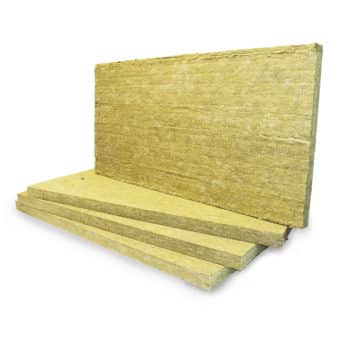
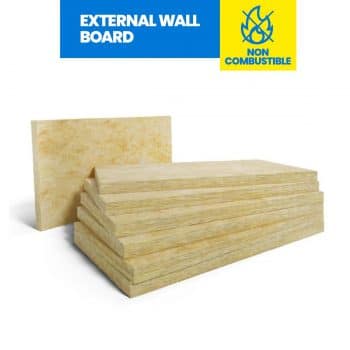
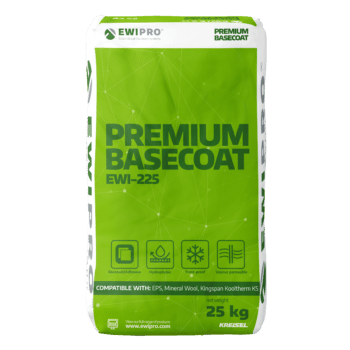
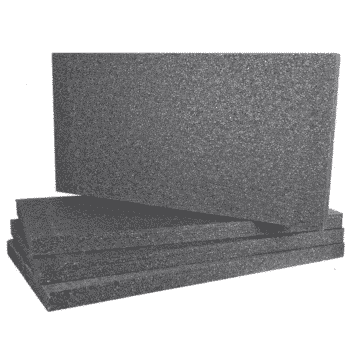

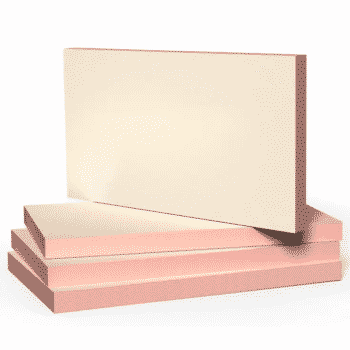
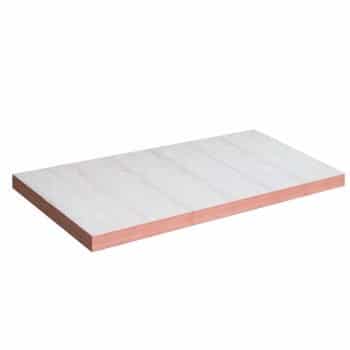
7 thoughts on “Mineral Wool vs EPS vs Kingspan K5 vs Wood Fibre in Solid Wall Insulation Systems”
This makes sense, think we will stick to EPS.
Your welcome!
EPS has low resistance to fire, it emmitt toxins when burns , what do you think about pir?
Is it possible to use foiled Celotex style boards as EWI on walls? (it is on warm deck roofs) I’m guessing the adhesive would need to be strong? Thanks
No… so you can’t use foiled backed Celotex. Kingspan K5 is the only PUR board approved to be used externally as part of an EWI system. If you want to have a look at what materials you might need for installing Kingspan K5 you can take a look at our handy Buyer’s guide.
https://ewistore.co.uk/kingspan-onto-brick/
Can you use a mix of Rockwool, K5 and EPS on a site with the same render
Hi Jo, we’d usually recommend just sticking to one type of insulation to maintain the same thermal performance throughout. You will need to use Rockwool around things like pipes but other than that, mixing insulation types could result in cold bridges.